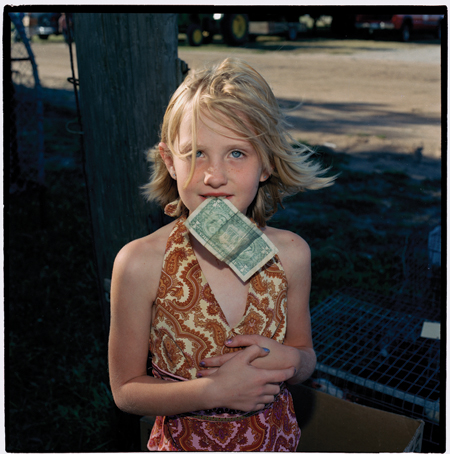
50 States Project
March 23, 2015
Englishman Stuart Pilkington describes himself as “a jack of all trades, master of none.” But in 2008, when Pilkington launched his first online group photography project, he discovered a latent talent. “I like getting people together, seeing what will happen,” he says. “I think we all like to be part of a tribe.”
Before that, Pilkington had bounced around in different jobs—from television postproduction to financial brokerage—and although he had a passion for photography, he didn’t know what to do with it. “I wasn’t confident enough to shoot much. I’d just ask photographers what equipment they liked, then go out and buy it.” In 2007, like many others, he opened a Facebook account but, rather than posting status updates, decided to use it to connect with like-minded people. Previously, he’d created a fan website for the author Paul Auster, who’d noticed the site and invited Pilkington to meet him in New York. So he decided to set up fan pages on Facebook for his photo heroes, Alec Soth and William Eggleston.
When photographers flocked to the Soth and Eggleston pages, it occurred to Pilkington that he was sitting on top of a pool of creativity. He conceived an ambitious idea: He would produce an online exhibition, The Alphabet Project, with one photographer for each letter of the alphabet. Photographer A would set an assignment for the other twenty-five; then two weeks later, photographer B would set a new assignment. And so on, for a year.
At first, when no one responded, the project seemed doomed. But after a few weeks, a photographer wrote back saying she liked the idea. “Sometimes, all it takes is one catalyst,” Pilkington says. Still, once the 26 were assembled, he didn’t know if they’d follow through. “I kept sending emails: I must have driven everyone mad. Luckily it was a great group of people: Everyone did it. Otherwise, it could have been the death of me.”
Orchestrating The Alphabet Project, and bringing it to completion as a Web-based album showed Pilkington he had a gift for producing large projects. Since then, he has put together eight more group projects, from 2009’s The Fifty States Project (a photographer in every state, each responding to assignments such as “Industry” and “Entertainment”) to The Swap, an ongoing initiative where two photographers meet and take portraits of each other. In addition to The Swap, he is currently overseeing The Three Disciplines, a project where photographers tackle three new genres: for example, an architecture photographer takes on self-portrait, still life and street photography. As with his other projects, The Three Disciplines has its own, ongoing website.
Since The Fifty States Project, his third endeavor, Pilkington’s reputation has grown. Thanks to a stellar list of contributors, The Fifty States Project garnered hundreds of thousands of hits and was featured in Esquire magazine. Now, with The Swap, he envisages a book project: “Not to make money, because you can’t do that with a book, but just because a book is a lovely, tactile thing.”
For his photographer collaborators, being part of Pilkington’s projects can build community and confidence. “It’s broadened my visibility and connections,” says Sandra L. Dyas, who represented Iowa in The Fifty States Project and has contributed to The Swap. London-based Lenka Rayn H., who also contributed to The Swap, agrees. “I’m proud of the work and will be exhibiting it in future. It has also been interesting seeing other swaps.”
These days, Pilkington has a spreadsheet of several thousand photographers he’s worked with, all of whom are invited to take part in upcoming projects. He also scours the Web for new talent, looking at sites like Conscientious, FlakPhoto and PDN’s 30. He has approached famous photographers, some of whom might contribute in the future.
But perhaps best of all, he has started shooting a project for himself. “Strangers in Paradise” documents people he meets on walks around cities in Britain’s northwest, and has itself become part of an online multi-photographer project, Documenting Britain. “Doing these group projects puts me in touch with so many photographers, it’s like my own university,” he says—a feeling that is echoed by many photographers he’s drawn into his projects. “Stuart’s projects inspire and motivate me: it’s fun to share my work online and be part of something,” says Dyas. “Participating in them makes my world much bigger than it was.”
Archive of original article can be found here: https://web.archive.org/web/20150331223405/https://www.pdnonline.com/features/Cooperative-Effort-Stuart-Pilkington-Graduates-from-Fan-Sites-to-Collaborative-Photo-Projects-12950.shtml